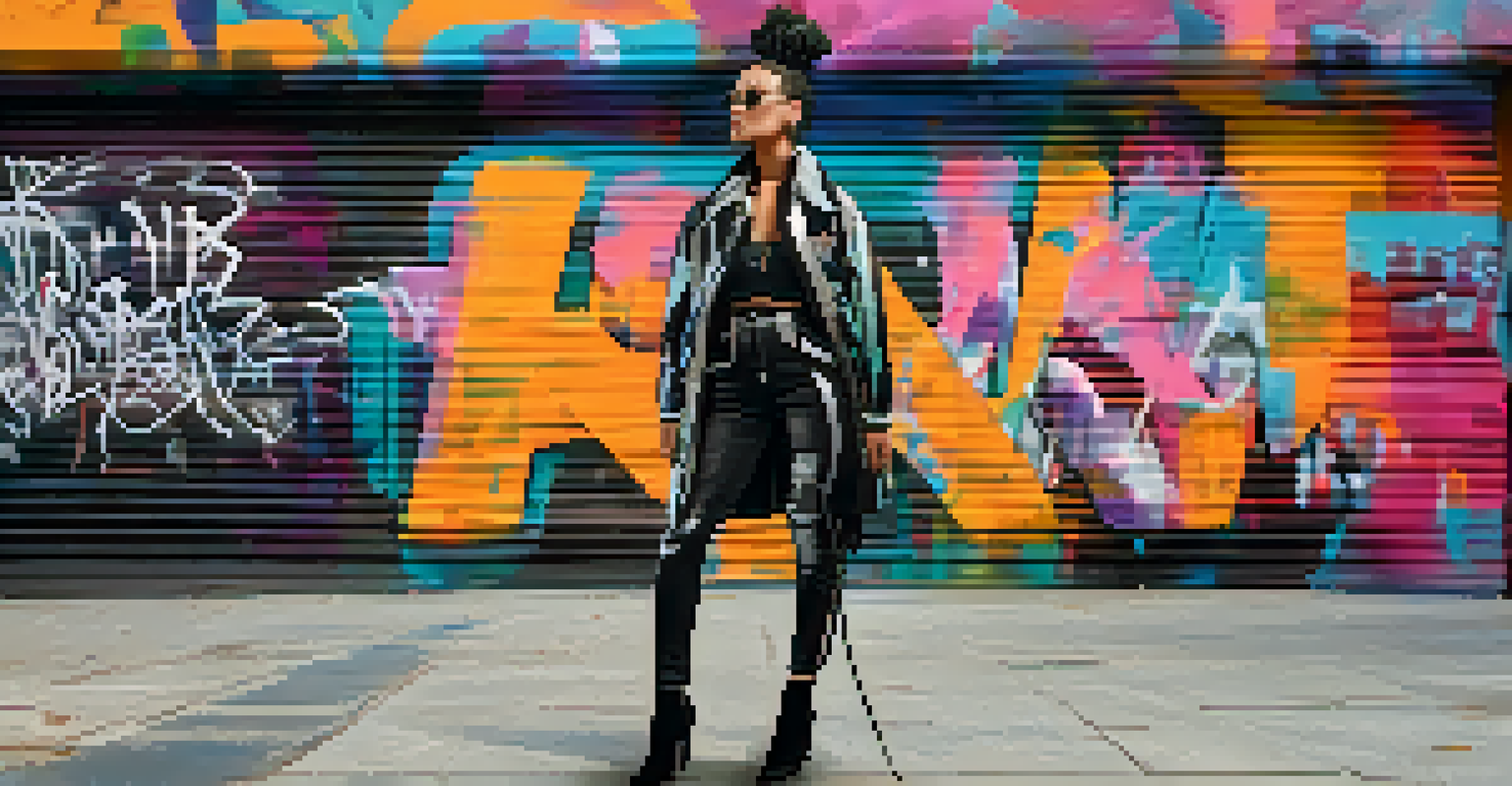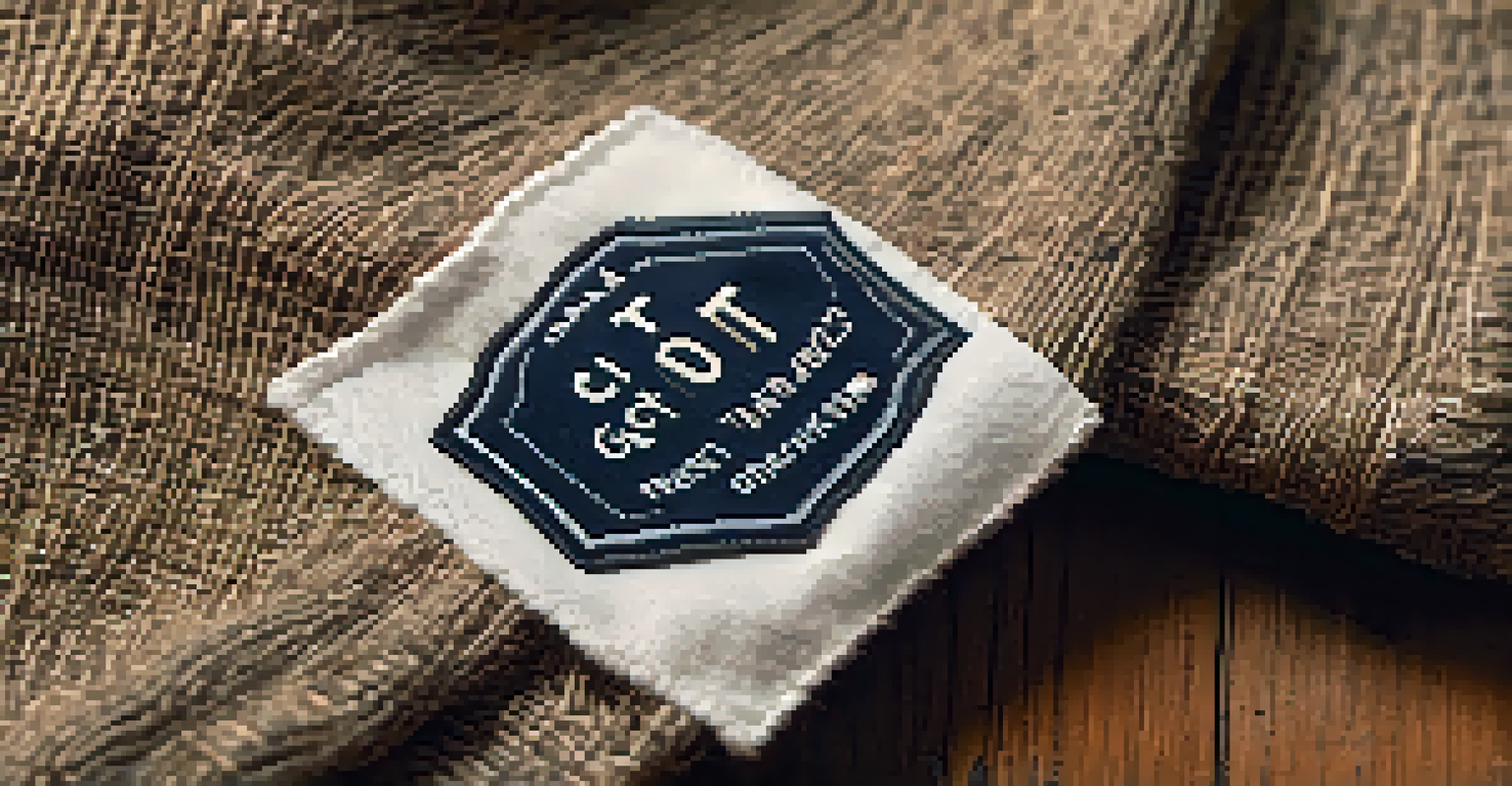Understanding the Shifts in Consumer Behavior in Fashion

The Rise of Sustainable Fashion Choices Among Consumers
In recent years, sustainability has become a buzzword in the fashion industry. Consumers are increasingly seeking out brands that prioritize eco-friendly practices and materials. This shift is not just a trend; it's a fundamental change in how shoppers evaluate their purchases, often opting for brands with transparent supply chains and ethical labor practices.
Sustainability is no longer a trend; it is the new standard.
For example, many consumers now check labels for certifications like GOTS (Global Organic Textile Standard) or Fair Trade, which indicate that a product meets specific environmental and social criteria. This growing awareness reflects a broader commitment to reducing one’s carbon footprint and supporting ethical businesses. As awareness grows, brands that fail to adapt may find themselves falling behind.
Ultimately, the push for sustainability is reshaping the entire fashion landscape, prompting brands to innovate and rethink traditional manufacturing processes. This change is not just beneficial for the planet; it can also enhance brand loyalty among consumers who align with these values.
The Impact of Digitalization on Fashion Shopping Habits
Digitalization has transformed the way consumers shop for fashion, making it more accessible than ever. With just a few clicks, shoppers can browse countless styles and brands from the comfort of their homes. This convenience has led to a significant increase in online shopping, particularly among younger generations who are tech-savvy and value instant gratification.

Moreover, social media platforms like Instagram and TikTok have become powerful influencers in fashion choices. Users often discover new trends and brands through curated feeds and influencer recommendations, driving immediate purchase decisions. As a result, brands are investing heavily in their online presence to capture the attention of these digitally-engaged consumers.
Sustainability Drives Fashion Choices
Consumers increasingly prioritize eco-friendly brands and transparent practices, reshaping the fashion landscape.
As we move forward, the integration of technology in retail will only continue to grow. Augmented reality (AR) features, such as virtual try-ons, are enhancing the online shopping experience, making it easier for consumers to visualize how items will look before purchasing. This blend of technology and fashion is creating a more interactive and personalized shopping journey.
The Shift Toward Inclusivity and Body Positivity
Inclusivity and body positivity have become central themes in modern fashion, reflecting a significant shift in consumer expectations. Today's shoppers demand representation of all body types, ethnicities, and genders in marketing campaigns and product offerings. Brands that embrace diversity not only appeal to a broader audience but also foster a sense of community and belonging.
Fashion is about dressing according to what’s fashionable. Style is more about being yourself.
For instance, many companies are expanding their size ranges and featuring models of various shapes and backgrounds in their advertising. This movement encourages consumers to feel confident in their bodies, leading to increased brand loyalty. Shoppers are more likely to support brands that make them feel seen and valued.
As the demand for inclusivity grows, brands that resist this change risk alienating potential customers. By prioritizing diversity and authenticity, fashion brands can create deeper connections with their audience and contribute to a more positive cultural shift in the industry.
Understanding the Role of Influencer Marketing
Influencer marketing has become a cornerstone of fashion advertising, significantly impacting consumer behavior. Many shoppers now look to influencers for style inspiration and product recommendations, often trusting their opinions over traditional advertising. This shift has reshaped how brands approach their marketing strategies, leading to collaborations with social media personalities.
The authenticity that influencers bring to promotions can create a sense of community among followers, making consumers feel more connected to the brands they endorse. For example, micro-influencers, who often have smaller yet highly engaged audiences, can drive substantial conversions due to their perceived authenticity and relatability.
Digitalization Transforms Shopping
The rise of online shopping and social media influences has changed how consumers discover and purchase fashion.
As brands continue to explore influencer partnerships, it's essential to choose individuals whose values align with their own. This alignment ensures that the messaging resonates with the target audience, ultimately enhancing brand credibility and consumer trust.
The Influence of Economic Factors on Fashion Choices
Economic conditions play a significant role in shaping consumer behavior in the fashion industry. During times of economic uncertainty, shoppers may prioritize essential items over luxury purchases, leading brands to adjust their marketing strategies accordingly. Understanding these economic signals can help brands navigate changing consumer priorities and preferences.
For instance, during a recession, there may be a noticeable shift toward thrift shopping and secondhand fashion. Consumers may seek out budget-friendly options, leading to the rise of resale platforms like Poshmark and Depop. These platforms cater to the growing demand for affordable, sustainable fashion choices, allowing consumers to stretch their budgets while still enjoying trendy pieces.
As economic conditions fluctuate, brands must remain agile and responsive to consumer needs. By offering a range of price points and emphasizing value, fashion companies can better align with their customers' purchasing behaviors, regardless of the economic climate.
The Impact of Globalization on Fashion Trends
Globalization has significantly influenced fashion trends, allowing consumers to access a wider variety of styles from around the world. This interconnectedness means that fashion trends can spread rapidly, with cultural influences merging and evolving in real time. Consumers are now more aware of international styles, leading to a more eclectic approach to personal fashion.
For example, the rise of K-pop has introduced Korean fashion trends to global audiences, inspiring countless fans to adopt these styles. This cultural exchange not only enriches consumer choices but also encourages brands to diversify their offerings to meet the diverse tastes of their clientele.
Inclusivity Shapes Consumer Expectations
Today's shoppers demand diverse representation in fashion, leading brands to expand size ranges and embrace body positivity.
As globalization continues to shape fashion, brands must navigate this landscape thoughtfully. Embracing multicultural influences while respecting their origins can lead to more innovative and appealing collections, enhancing brand relevance in a competitive market.
The Future of Consumer Behavior in Fashion
Looking ahead, consumer behavior in fashion is likely to continue evolving in response to various factors, including technological advancements and shifting cultural values. Brands that stay attuned to these changes will be better positioned to connect with their audience and remain competitive. Anticipating trends before they fully materialize can be a game-changer in this fast-paced industry.
The emphasis on personalization is expected to grow, with consumers seeking tailored experiences that reflect their unique preferences. Whether through customized products or personalized marketing messages, brands that prioritize individualization will likely foster stronger customer relationships.

Ultimately, the future of fashion consumer behavior will hinge on a brand's ability to adapt and innovate. By embracing change and understanding the diverse needs of their audience, fashion brands can thrive in an ever-shifting landscape.